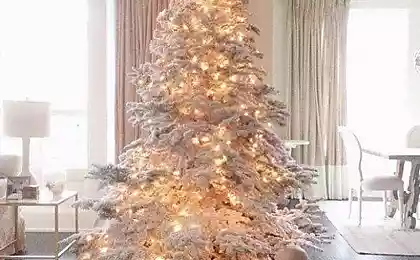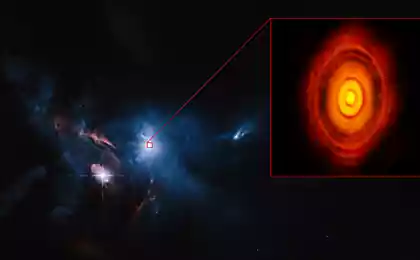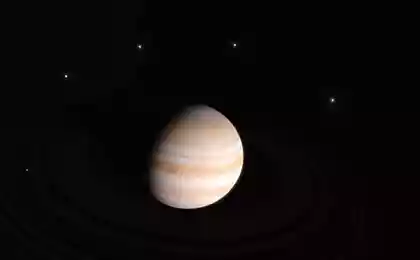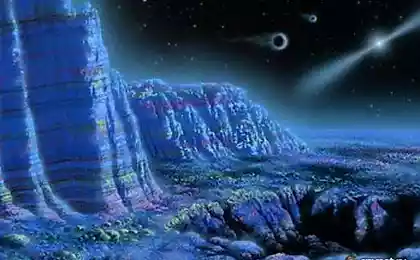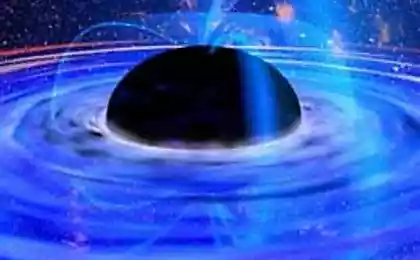505
Drought exoplanets surprise astronomers
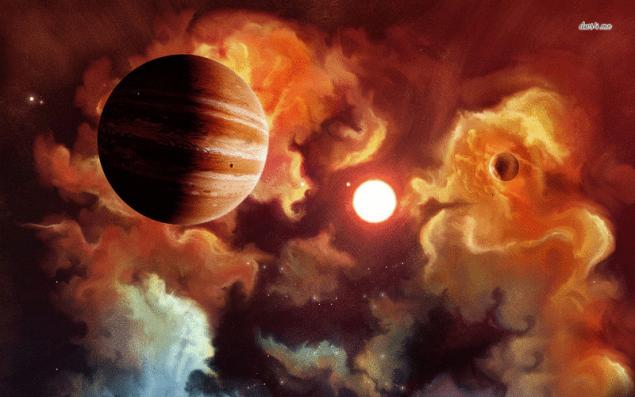
Astronomers have not found predicted by the theory of water vapor in the atmospheres of three hot exoplanets.
According to modern views the formation of giant planets occurs in the circumstellar protoplanetary disk, consisting mainly of particles of ice and dust, hydrogen, helium and other chemical elements. Dust particles gradually coalesce with each other forming larger and larger grains. Gravitational forces pull together these grains and large particles together, forming a solid core. This leads to a rising fall (accretion) of solid particles and gases in the core of the future of the planet, which in the end, and creates a giant planet.
The theory predicts that one of the most common elements of the planets and their atmospheres should be oxygen and, as a consequence, there must be a lot of water (H2O). However, this is not observed in very cold atmospheres of giant planets of the Solar system due to water condensation. Thus, there is no key confirmation of the prevailing theory of planet formation.
On the other hand, has now discovered hundreds of hot planets orbiting other stars. They are called exoplanets. Their high heat associated with being so close to the star. Because astronomers are able to detect only very large exoplanets, comparable in size to Jupiter, they are also called "hot Jupiter".A sufficiently high temperature (above 1000 K; recall that the normal temperature in degrees Celsius can be obtained by subtracting 273) provides for the conversion of water into steam, which makes them excellent subjects to measure the prevalence of water and, hence, oxygen in their atmospheres.
From Earth the discovery of water on exoplanets is almost impossible, because the Earth's atmosphere contains a lot of water and contaminates the observation. Therefore an international team of astronomers were able to search for water vapor in the atmospheres of three exoplanets orbiting stars similar to the Sun using the Hubble space telescope (NASA). These planets, known as HD 189733b, HD 209458b, and WASP-12b, located at a distance of from 60 to 900 light years from Earth and have a temperature of 1200-2500 K. They were chosen because they are near bright stars, creating enough radiation for receiving the infrared light spectrum at which measurements were taken. Absorption features of water vapor in the planet's atmosphere are recorded during the passage of star light through the atmosphere of the planet.
To the surprise of researchers studied the planet was very dry. They were only discovered from 0.1 to 0.001 the amount of water predicted by theory formation.
The Nikko Madhusudhan (Madhusudhan Nikku) from the Institute of astronomy, University of Cambridge (England), who led the research, said:
"Our water measurement in one of the planets, HD 209458b, is the most accurate measurement of chemical compounds on planets outside our Solar system, and we can now say with much greater certainty than ever before that we found water on the exoplanet. However, the low amount of water, which we still found quite amazing."
He pointed out that this conclusion constitutes a serious difficulty for the theory of exoplanets. "It basically causes a bunch of problems in planet formation. We expected all these planets a lot of water. We need to revise the theory of the formation and migration models of giant planets, especially "hot Jupiters," and investigate how they are formed ".
These results can have serious consequences for the search for water in potentially habitable extrasolar planets the size of Earth. Instruments on future space telescopes may need to be designed with higher sensitivity if target planets drier than predicted.
On materials of the Space Telescope Science Institute
Source: nkj.ru
The traditional way of warming the house with sawdust
Scientists electric cars will not save the planet






